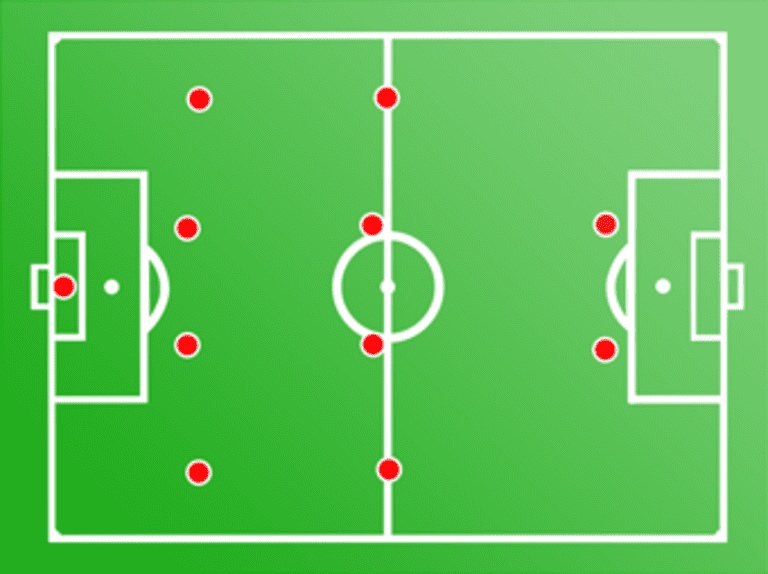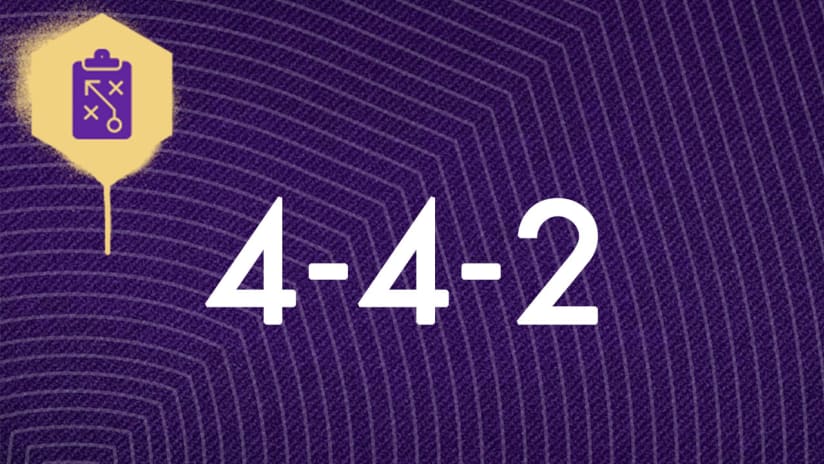The 4-4-2 is one of the most classic and widely used formations in all of soccer. It has been a highly effective formation because of it’s flexibility and simplicity.

The 4-4-2 on Attack
The 4-4-2 provides many different attacking options - and that is one of the reasons why it is so popular. The two forwards at the top of the formation are often the focal point of the attack. Many coaches elect to have one bigger striker, or “target forward”, and another, quicker player paired together up top. This allows the team to hold up the ball with the target forward and play passes behind the defense.
Due to the flexibility of the formation, midfielders and even the full backs are also free to join the attack. With numbers in the midfield and defense, holes created by a player making an attacking run can often be filled with ease.
The 4-4-2 on Defense
The 4-4-2 is aided on the defensive side by its clearly defined positions. The back four can rely on their midfielders to pressure oncoming attackers while marking players making runs into the area. With only two forward players, the 4-4-2 can stack eight men in a neat four columns stretching across the pitch. This can be a tough nut to crack.
Pros
- Easily learned. Many young players have grown up playing the 4-4-2
- Help nearby. Defenders and midfielders have a player closeby to assist in most situations.
- Flexibility. Many different versions of the 4-4-2 can be employed at a moment's notice. This allows teams to easily change their tactics mid match without a change in personnel.
- Tight formation leads to short, easy passes.
Cons
- Opponents can take advantage of your width with passes through the gaps.
- Can be easily caught on the counter-attack if the fullbacks push too far forward.





